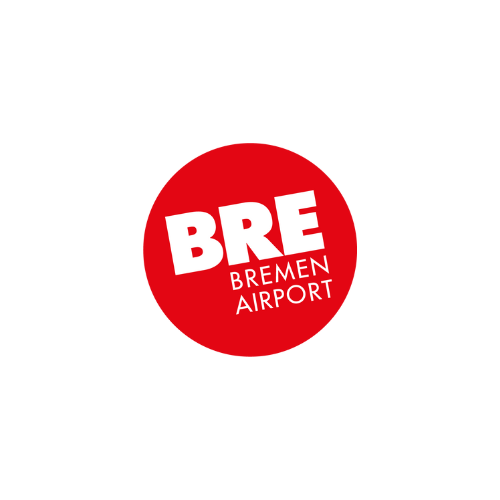In the late 1980’s, around the time when the first at-seat, in-flight entertainment system was tested, less than 1% of all technologically stored information was in digital format. By 2014, 99% of all data was stored digitally. Things have moved fast, and still new technologies continue to emerge. The world is now fully immersed in a digital age.
As digital becomes integrated into the ‘every day’ for consumers, digital advertising techniques and customer expectations have become more sophisticated. It’s no longer enough to keep up with the technology.
Many airports are already on board with big data, biometrics and robotics, and even the technology behind the aircraft is taking huge strides with affordable commercial supersonic flight only a few years away. However, in order to stay ahead of the competition, airports must look forward, evaluating new trends and getting creative about the potential offered by technology within marketing, operations and customer service.
Game-Changing AR Technologies for 2019
Virtual and Augmented Reality
The world is embracing virtual and augmented realities. Although it’s still a nascent industry, revenue from Virtual Reality is expected to top $74 billion by 2021. While AR and VR are familiar as aspects of gaming, with the Pokémon Go craze representing their full interactive potential, there is also tremendous opportunity for brands to use these technologies to improve customer experience.
When it comes to marketing techniques and uptake of new ideas and technology, airports can often look to retail for examples of what’s working, and where customer expectation is heading.
Furniture brand IKEA has been using VR gaming technology since 2016. IKEA’s Virtual Reality Kitchen allows customers to try out different products within a customised kitchen range, and even move around the space performing basic tasks like opening drawers, to get a feel for the kitchen digitally before buying. This changes the way people shop, allowing them to try out different units, colours and finishes in an immersive way. It improves the shopping experience by making it more informative, and also adding an element of fun.
Optimising customer experience is an important objective for airports too. Biometrics, augmented reality, big data, cyber security and Risk-Based Screening are all being developed to help ease the passenger journey through the terminal, and each method has its place. But augmented reality has real potential, especially if it can be applied in a way that is easy to use on the passenger’s own mobile device. By connecting with customers via their smartphone, it will be possible to create a personalised experience for each passenger.
An AR app could be used to:
- Guide the passenger through the airport to various areas of the terminal, based on that passenger’s preferences and previous buying habits
- Calculate the amount of time the passenger has in which to enjoy the airport concessions
- Provide information about types of food and beverage concessions for a range of prices
- Direct customers to the restaurants by pointing to the correct direction and providing arrows to guide the way
- Allow passengers to track down special offers at the airport
- Offer additional information about shops and food concessions, including menus and 3D images of dishes or products
- Link products such as clothing and accessories to information about, for example, weather at the passenger’s destination
- Notify the passenger about boarding at the optimum time, depending on their location in the terminal and distance from the gate, and offer help in directing the passenger to the gate
Gatwick Airport’s award winning app uses AR to provide personalised, real-time flight updates, gate information and security and check-in queue times. This presents travellers with a frictionless experience in the airport. To make this possible, Gatwick installed 2000 wayfinding beacons throughout the airport, facilitating interactive maps that help passengers to navigate the terminal buildings.
AR in Airport Operations
Inside the terminal, augmented reality is an exciting tool when it comes to improving passenger experience. However, it has valuable operational applications too. Singapore Airport has used AR in its ground handling operations since 2017. AR was introduced with the aim of increasing efficiency in baggage handling, shortening load times by around 15 minutes, increasing productivity and making the workplace safer for staff. This results in a reduction in aircraft turnover times, meaning fewer delays for passengers and reduced capacity problems in baggage collection.
The potential for AR within air travel is wide reaching. It is also relevant within the aerospace maintenance, repair and overhaul market, which is growing by 4.2% every year, creating a technical skills gap. AR can be used to close that gap, delivering workflows and step-by-step instructions to technicians. With instant access to real-time information, staff will be able to efficiently complete complex tasks with less formal training.
The technology is pertinent to operational training too. In May 2017, IATA implemented VR into its training programmes. Its plug-and-play tool increases the immersion of conventional training, combining high-spec hardware and software in ground operations training. The result is that theory can be enhanced with effective practical learning in a realistic simulation of the ramp environment without the challenges typically faced in this type of training.
AR finds a voice
When implementing augmented and virtual reality processes on mobile devices, certain situations will make touchscreen operation off limits. In fact, whether the user is trying to service landing gear wheel bearings whilst following instructions or navigate the airport with two small children, interacting with the device can cause distractions and be problematic. However, introduction of voice technology alongside AR and VR provides the answer.
Voice activated assistants like Apple’s Siri and Amazon’s Alexa are already popular with consumers, and voice technology is a natural progression in improving convenience for airport passengers, particularly as half of all search queries will be voice based by 2020.
To get ahead with this trend, it’s important to think about using a conversational style. People generally speak more naturally than they type, and speech search has none of the expectations around limited word numbers: The customer is more likely to input a direct question. It’s also vital to optimise your site for mobile. Voice search is predominantly a mobile-based phenomenon, and these days a website that works seamlessly on a small screen is absolutely essential.
Amazon’s Alexa voice assistant has its own developer platform. ‘Alexa skills’ allows users to customise their Alexa just as it’s possible to personalise a smartphone with apps. London Heathrow has become the first airport in the UK to create its own ‘skill,’ which can be used either via the smartphone app or downloaded to Echo devices free of charge.
Heathrow skill allows travellers to check on flights using the voice instruction “flight”, followed by their flight number. Alexa will confirm the details and provide the most recent status update for that flight.
Heathrow’s ‘skill’ is designed to respond to flight numbers in order to provide the appropriate information. With an airport the size of Heathrow, the status of a flight can change constantly, so the skill is useful in relaying information directly to the passenger with minimum effort and searching. There is the potential to extend this to flight booking and other secondary services in the future.
Behind the scenes, aerospace companies including Boeing are already combining voice with AR. Using Upskill’s Skylight enterprise AR platform, technicians can interact with the software on smart glasses using voice commands. This means they can remain hands-free with the technology whilst performing complex tasks such as assembling wiring harnesses, resulting in a 25% improvement in productivity and an almost complete elimination of errors. Voice recognition technology can also make it easy to contact an expert who can provide guidance through the AR device. Any problems can be resolved quickly and the skills gap is tightened as less experienced workers learn on the job.
Voice recognition technology has already made noticeable impacts, but there is still a long way to go. Voice is limited in terms of the number of words or phrases the customer can use to generate an accurate response. The next step is for the technology to learn to understand the question in context, which is another valuable application for personalisation.
Opportunities for airports
The future is bright for airports. Virtual and augmented realities are inspiring new engagement from travellers, marketers are exploring greater creativity, and operations and training AR is promoting a high level of skill and opportunity on the ground. Airports will find it easier to respond to their customer’s needs, and as they become more familiar with AI and machine learning capabilities, they will deliver more streamlined, personalised experiences that are ultimately more enjoyable for the passenger. A solution like Rezcomm, the world’s first combined ecommerce platform for airports, provides access to more data and better insights. The software lands sales through smart passenger profiling, and this builds the information necessary to move forward with AR and voice, as it will by nature inform the use and application of all customer-facing technology.
A top level of service is at the heart of customer retention and acquisition. And by tightening up operational and training processes resources are better managed. Ultimately by improving quality across the board, there is a positive impact on the bottom line financially.
Rezcomm’s provides pioneering ecommerce solutions for the aviation industry. To find out how we can help to reach more passengers and make more sales, book a meeting with one of our team today.




























